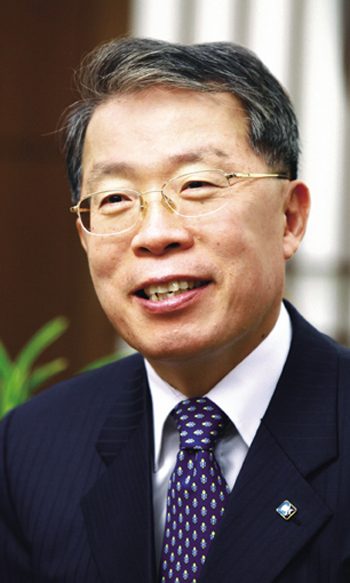 IBK Enters Moscow
IBK Enters Moscow
Its rep. office to work toward setting up wholly-owned subsidiary and look for Russian banks to take over
The Industrial Bank of Korea (IBK) opened its representative office in Moscow, Russia, on June 30, its 11th overseas branch, after eight months of work to set up the office, the bank said recently. The bank said its people were sent to the Russian capital in October 2009 to work on the bank¡¯s decision to open an office there and finally got the permit from the Russian financial authorities to open the office.
The office has been engaged in a number of key areas of the IBK¡¯s operations including the establishment of a wholly-owned subsidiary in Russia and the takeover of banks in the host country. The office has also been providing information on business opportunities for domestic SMEs that want to explore markets in Russia as well as to help them settle problems with their Russian customers and other problems so that they will be able to run their businesses efficiently.
The office also plans to provide loans to SMEs operating in Russia as soon as its business base is secured, the bank said.
IBK has 10 branches and 1 representative office in its global network including five branches in China and one each in New York, London, Hong Kong, Tokyo, Ho Chi Minh City and Moscow.
Established under the Industrial Bank of Korea (IBK) Act in 1961, the IBK shares a special relationship with the Korean government. The bank¡¯s primary objective is to ¡°promote independent economic activities of small and medium-sized enterprises (SMEs) and to enhance their economic position in the Korean economy.¡± Due to this public policy role, the government retains full control over the bank including the appointment of management and the approval of budgetary and operational plans.
On December 11, 2003, an amendment was made to the IBK Act, giving the bank more autonomy in its operations. Among other activities, the bank was allowed to invest in the equities and debt securities of the SMEs and to set up budgeting requirements for general and administrative expenses besides labor costs. An additional amendment was made to the Articles of Incorporation of the Act on March 30, 2005, granting the IBK the authority to utilize more diverse sources of capital.
Due to the bank¡¯s critical role in implementing SME promotion policies, it receives the highest level of implicit and explicit support from the government. Operations are guaranteed in principle by Article 43 of the IBK Act, which states, ¡°The Bank shall cover any net loss incurred during a particular fiscal year with its reserves and if the reserves are insufficient, the government shall provide funds to cover the deficit.¡± As the article stipulates, if the bank¡¯s reserves cannot cover the annual net losses incurred during operations, the Korean government is legally obligated to replenish the deficit. Furthermore, it is the only bank in Korea allowed to issue Small and Medium Industry Finance (SMIF) bonds. SMIF bonds provide the bank with a low cost funding advantage over commercial banks. The aggregate outstanding balance of SMIF bonds can be issued for up to 20 times the bank¡¯s paid-in capital plus its reserves.
Prior to 1994, the bank¡¯s entire issued share capital was held by the Korean government. The government ownership decreased to 64.5 percent following the issue of new shares to the public and bank employees in 1994. In late 1999, the government announced a recapitalization plan to rehabilitate investment trust companies still reeling from the Asian Financial Crisis. Along with the two other state-controlled banks ¡ª the Korea Development Bank (KDB) and the Export-Import Bank of Korea (KEXIM) ¡ª IBK was chosen to facilitate the initiative.
A major part of the plan involved the partitioning of the bank¡¯s equity stock. Upon its implementation, KDB and Korea Investment & Securities Co., Ltd. (KITC) became new IBK shareholders in December 1999, receiving portions of shares previously held by the government. KEXIM also became a shareholder by purchasing 200 billion won in shares on January 29 and 166.7 billion won worth on June 23 in 2000.
Coinciding with the bank¡¯s listing on the Korea Stock Exchange in December 2003, KEXIM and KITC sold 46,000,000 of the bank¡¯s shares in a public offering. KITC relinquished the rest of its ownership in IBK by selling its remaining 48,532,922 common shares in a Global Depository Shares (GDS) offering the same month.
In 2005, KEXIM divested 32 million of its common shares in the bank, or 7 percent, to foreign and domestic institutional investors. As a result, the government¡¯s shareholdings continued to retract, decreasing to 66.7 percent of the total ownership. This ownership structure remained the same thereafter.
At year-end 2007, the government directly owned 51.0 percent of IBK shares, combined with its indirect holdings via KDB and KEXIM, which were 12.5 percent and 3.2 percent respectively, accounting for approximately 67 percent of the bank¡¯s outstanding shares. In addition, foreign ownership accounts for 20.8 percent of IBK¡¯s common shares as of year-end 2007. nw
President Yun Yong-ro of the Industrial Bank of Korea.
3Fl, 292-47, Shindang 6-dong, Chung-gu, Seoul, Korea 100-456
Tel : 82-2-2235-6114 / Fax : 82-2-2235-0799